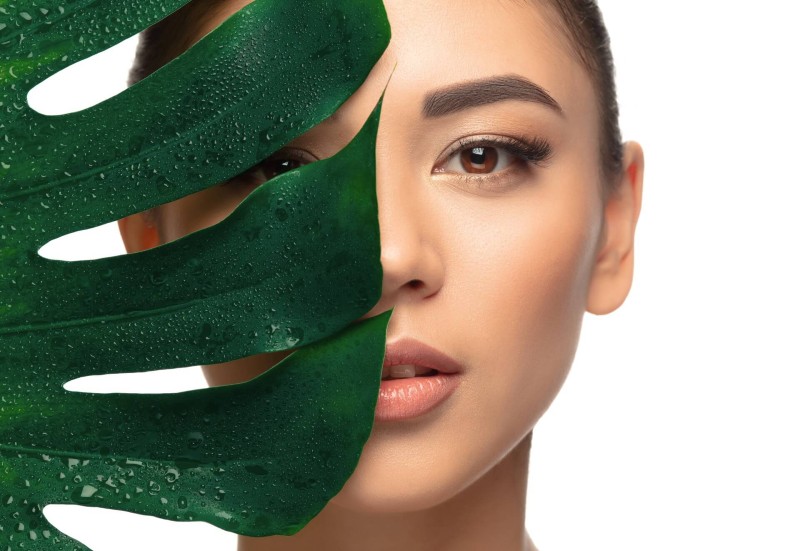Sustainability: Sourcing and manufacturing challenges for "GREEN" cosmetics
With increasing debate over and demand for sustainability, there is a strong market trend to formulate more sustainable products. The beauty and cosmetic products with sustainable and climate-neutral formulations and packaging are growing. Several factors have encouraged sustainability in the cosmetics industry: climate change; greater diffusion and awareness for social issues caused by the industry, the consumer demand for more natural, green or organic products since they are typically associated with promoting health; greater availability of sustainable ingredients from raw material suppliers; and legislation that requires the adoption of certain sustainable measures.
The pressure to move in the direction of more sustainable patterns of production is greater than ever. It can be simply understood as the evaluation of the future impact of cosmetic products presently developed, and not only the products but also the way they are being produced with ingredients which must be traced. With forceful market pressure and the irreversible shift toward naturality with sustainability, cosmetic companies must effectively answer the right questions if they seek growth in a very competitive and fast-paced market.
Sustainability: Why?
With greater use of natural resources, reports about its negative effects on the planet and communities there is growing knowledge and awareness from consumers about sustainability issues. This increase in their consciousness results in growing demand for product sustainability. Consumers are demanding that the industry address their expectations for sustainable beauty products and be accountable for their product design and practices. The companies should aim to accomplish reducing the environmental, economic and social impacts of cosmetic products by implementing sustainable cosmetic solutions. When companies start developing sustainable products and implementing sustainable practices, it allows them to be successful, enhances brand reputation, boosts sales, creates savings and ultimately generates a positive return on investment.
Sustainability approach by cosmetics companies benefits them in 3 ways:
- Improved Product Quality
- Enhances Brand Reputation
- Increases Corporate Responsibility
Cosmetic Sustainability: What needs to be done?
Cosmetics companies need to create innovative and enhanced products that meet the public demands for planet conscious formulations, and sustainable packaging. While each phase of a cosmetic product lifecycle will affect its sustainability, a significant part of the environmental impact of a product is determined at the design stage, recognizing the importance of the ingredient sustainability aspects. So it is important that with the development and search for sustainable products, it is also necessary to establish feasible and concrete criteria regarding the sourcing and selection of raw materials. Cosmetics companies need to respond to the request of their customers for more transparency with regard to formulations and types of packaging, and researching ways to reduce plastic waste.
Sustainable Cosmetic products these days
Cosmetics developers pursue oleochemicals, along with any potential sources for them. Some examples of common sources include:
Natural Oils: Palm and coconut oils are often used to derive fatty alcohols, which are used as chemical surfactants. Other oils include argan oil and avocado oil. Glycerine, a derivative of palm oil, is a common byproduct.
Agricultural Plants: Soybeans, corn and other agricultural plants are used throughout the cosmetic industry to produce oils and alcohols. Green cosmetic emulsifiers, surfactants and biocatalysts are derived using these plants, which can be cheaply and sustainably sourced.
Bacteria: One example of a renewable resource currently under development is the Deinococcus bacteria, a bacterium studied by Deinove in France for its chemical production properties. Deinove has used the bacterium to create aromatic ingredients and pigments for the cosmetic industry, representing a potential market value in the hundreds of millions of dollars.
The Future of Sustainable Cosmetics
The growing interest in sustainable cosmetics has had a significant effect on the cosmetics market. With an increasing number of consumers and retailers demanding cosmetics with natural or sustainable ingredients, the green cosmetics market has experienced a 20 percent annual growth rate.
Companies are also investing a lot in replacing traditional plastic packaging. In the last few years, many natural and organic brands have redesigned traditional cosmetic products to drastically reduce or completely avoid plastic packaging. In many cases, plastic packaging is being replaced by cardboard and glass, which are easier to recycle and reuse. Refilling options have recently become very popular as they allow consumers to reuse the packaging of a product multiple times, which results in a significant reduction of packaging production.
Within the personal care industry, the oleochemicals market is increasing as cosmetic manufacturers continue to turn away from petrochemicals. Fatty acids, in particular, should experience boosts on the green side of the market, considering that they accounted for more than 55 percent of the total oleochemical product demand.
Conclusion!!
Manufacturers shifting to sustainable cosmetics production have a very promising future.
Don't forget to checkout this experts recommended online training; Formulate Sustainable & Safe Cosmetic Products; Natural As Well As Conventional Formulations
Checkout this experts recommended training: High-Performance Natural Cosmetics: Ingredient Selection, Formulation, Evaluation, Claims and Regulations

